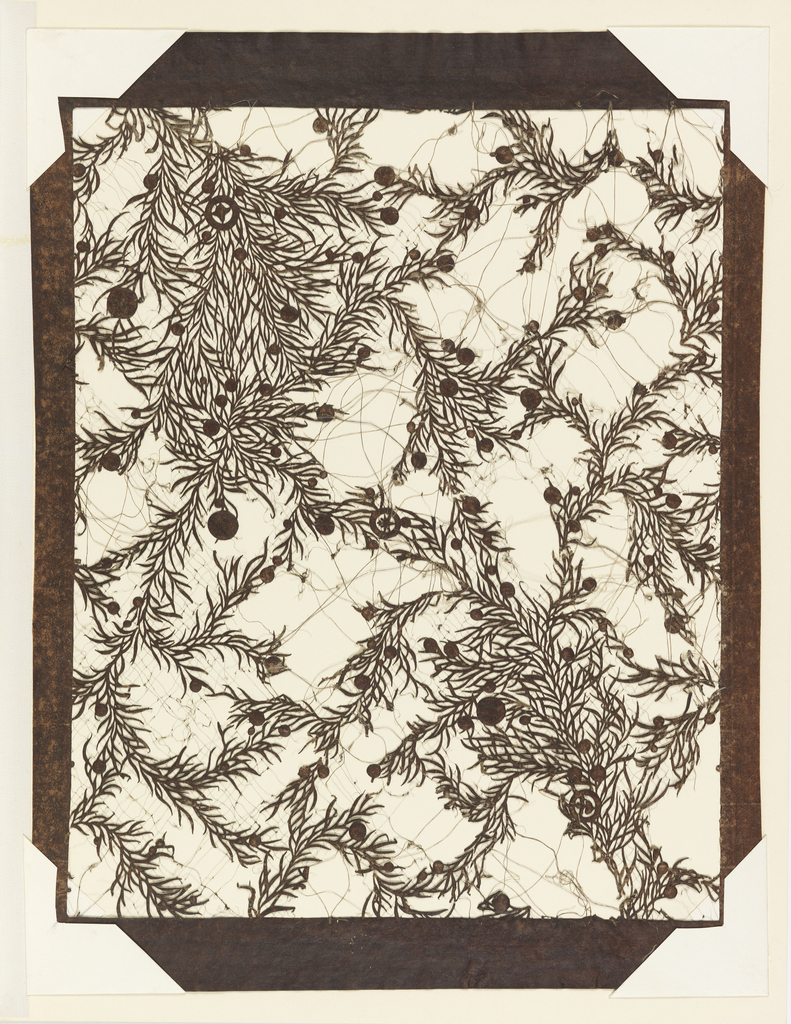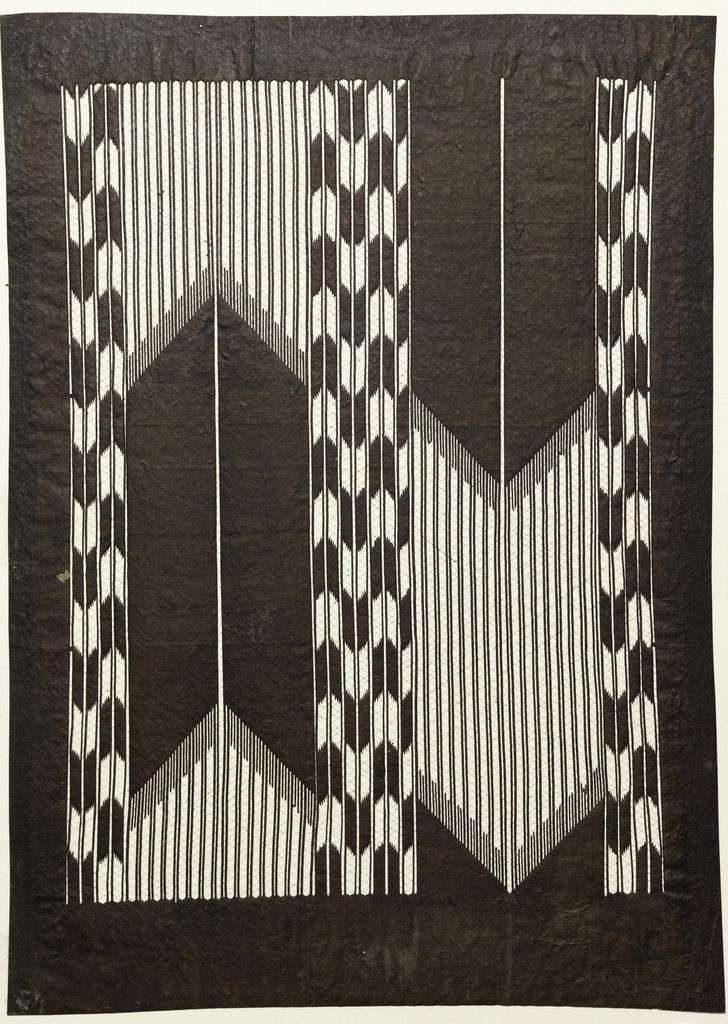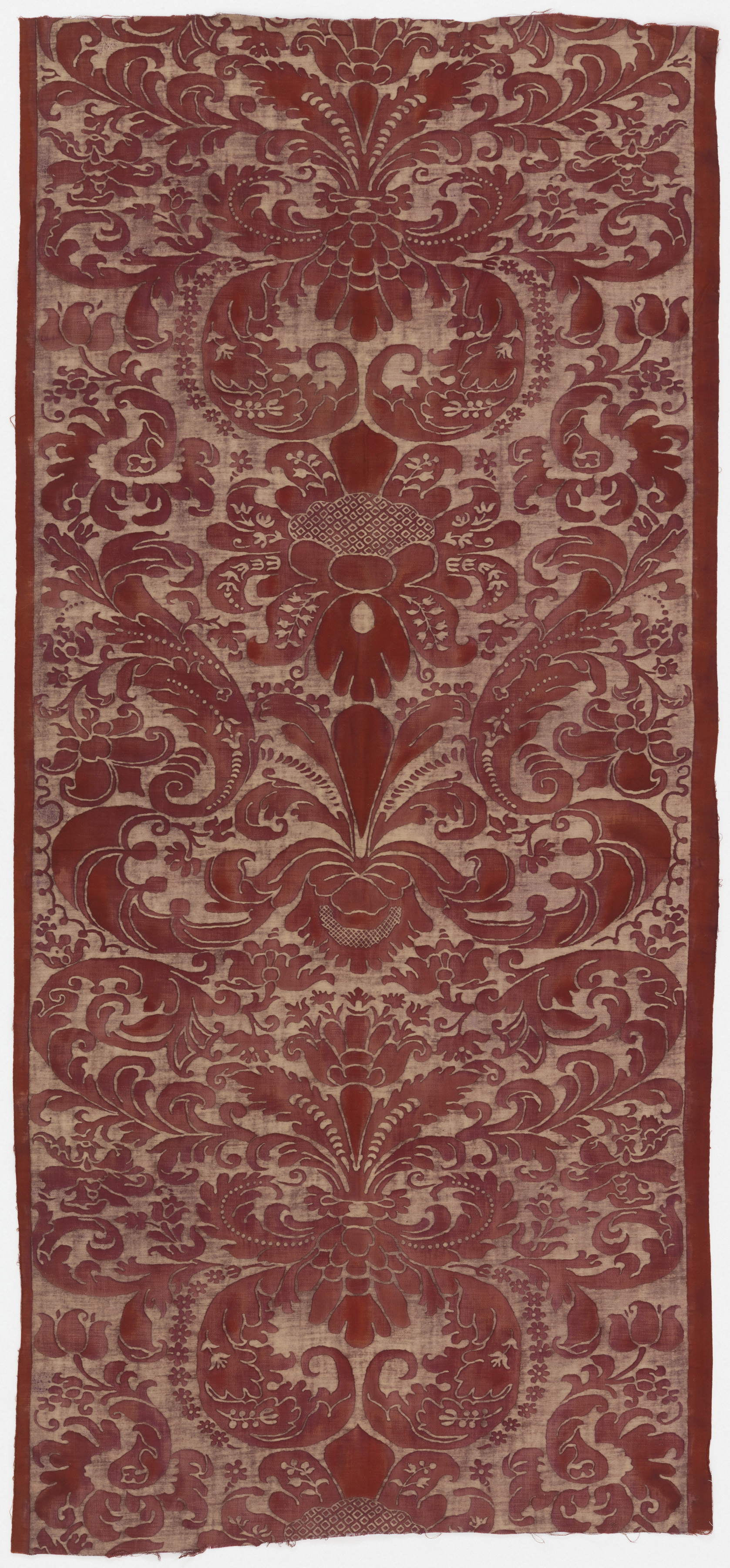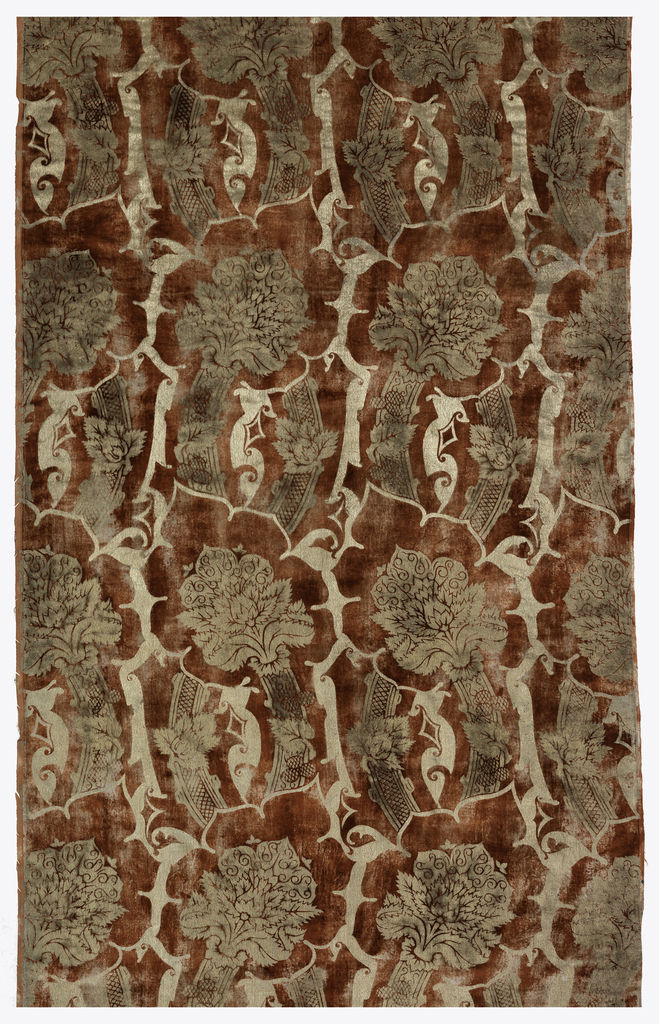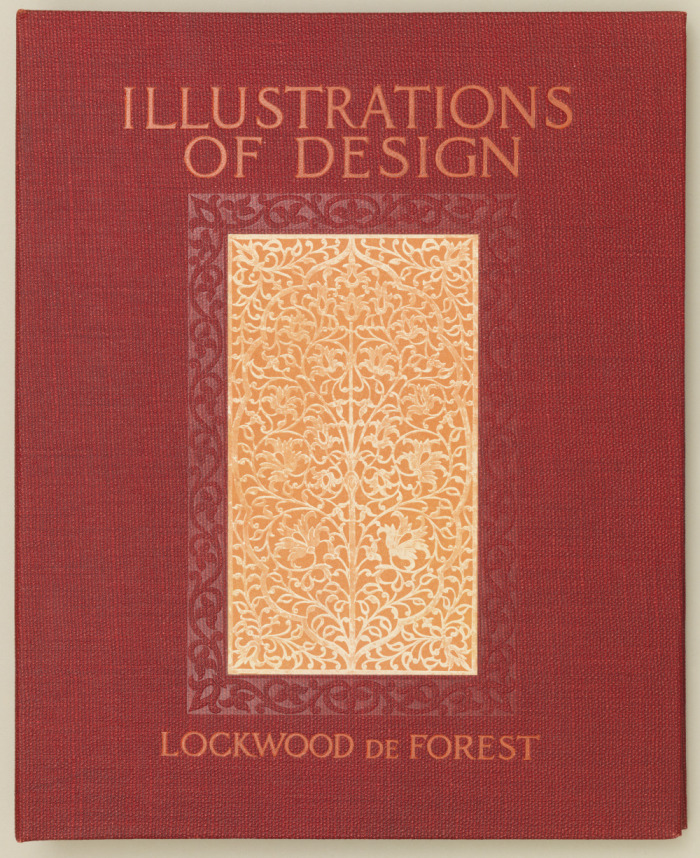Author: Hillary Waters Fayle In celebration of the third annual New York Textile Month, members of the Textile Society of America will author Object of the Day for the month of September. A non-profit professional organization of scholars, educators, and artists in the field of textiles, TSA provides an international forum for the exchange and...
The word katagami, the Japanese term for the paper stencil used to print patterns on fabric, translates literally as “pattern paper.” Featuring designs and motifs drawn from nature, traditional folklore, and literature, katagami are crafted as tools to be used in the resist-dyeing process that is used to produce printed textiles in Japan. The patterns...
Named after the 17th century Italian painter, “Caravaggio” was designed in the spirit of the Italian Baroque with a pattern of pomegranates and heavy vegetal scrollwork foliate. Fortuny achieved the appearance of woven silk damask by printing on a satin weave fabric of long staple Egyptian cotton, which had a natural sheen, and creating depth...
Mariano Fortuny and his family collected textiles and costumes from around the world, compiling a rich resource that served as inspiration for his own designs. “A fabric design,” he once noted, “concretely captures a moment through the skill of the artist, who responds unconsciously to the place and time in which he lives.” This pattern...
This publication was written by Lockwood de Forest during the years of his retirement from decorating after moving permanently to Santa Barbara, California. As he says in the preface, de Forest wrote the book for design teachers so they could teach the principles of Indian design to students, helping them generate pattern through using certain...
